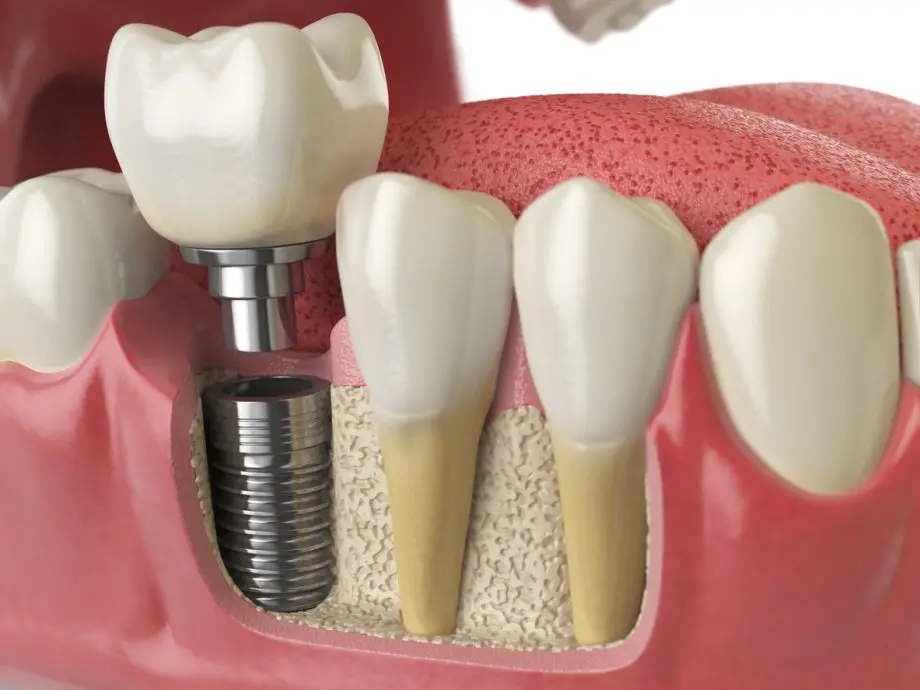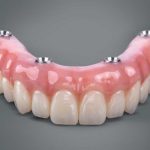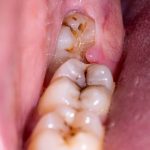Dental implants are one of the most reliable long-term methods of tooth replacement. Since they became widely available in the 1980s, numerous scientific studies have demonstrated 10-year success rates of over 95%. Of course, that begs the question of what happens in the small percentage of problematic cases that don’t go so well. That’s actually not a difficult question to answer precisely because implants have been studied so extensively. But first we need to understand what makes them succeed.An implant replacement tooth consists of several parts. First there is the dental implant itself — the tooth-root replacement — which is a small titanium post shaped like a screw. It is placed into the jawbone beneath the gum line during a minor in-office surgical procedure that causes only minimal, if any, discomfort. Titanium, of which most dental implants are made, has the unique ability to allow living bone to grow onto its surface in a process called osseo-integration (“osseo” – bone; “integration” – joining with), and in fact has a wide variety of surgical uses. It generally provides a solid basis of long-lasting support. Once the implant has joined to the bone, a crown — the visible tooth part — is attached to it, most times via a connector called an abutment.
Successful implant treatment involves careful planning. The implant surgeon must take a complete medical history (including all prescription and over-the-counter medications and supplements) and complete a thorough examination with the aid of specialized radiographs (x-ray pictures) like CT scans when necessary. They are needed to determine, among other things: the condition of your jawbone; the location of important anatomical structures, such as nerves, blood vessels and sinus cavities; and the appropriate number of implants necessary to do the job. The implant team, which generally includes a surgeon (a periodontist, oral surgeon or general dentist with appropriate training), a restorative dentist and laboratory technician, must determine: the appropriate number and position of the implants; the biting forces they will receive; and what type of crowns, bridgework or dentures should attach to them.
Single implant with temporary crown placed (same day) for social/cosmetic purposes only. Note it is shortened so that biting forces cannot disrupt the healing process to result in failure. A permanent crown of normal dimensions is placed following healing.Bone quality, which includes volume and density, is fundamentally important in ensuring implant success. Various systemic (general body) health conditions and habits can affect bone quality and the body’s ability to heal. This in turn affects the process of osseo-integration so crucial to implant success. That’s why individuals who have, among other conditions, diabetes; a compromised immune (resistance) system; osteoporosis (“osteo” – bone; “porosis” – sieve-like); or those who smoke may be at greater risk for implant failure.
On rare occasions, the surgery itself is not successful and an implant may not integrate with the bone. A pre-existing or post-operative infection at the site may be the cause. Occasionally, the implant fails to join with the bone by becoming enveloped in a thin fibrous capsule that prevents the integration process — for no clinically apparent reason. In these instances the implant is simply removed, the capsule cleaned out, and either a wider implant is placed, or the socket is allowed to heal and the implant procedure repeated. These early failures are generally easy to re-treat, or they may reveal other local or systemic problems.In highly visible areas of the mouth, it is sometimes possible to place a crown on an implant the same day so that the person doesn’t have to leave the dental office with a noticeable gap in his/her smile. This is called “immediate provisionalization with no loading.” The key is not to stress the implant while the integration process is taking place. Subjecting an implant even to gentle biting forces (i.e., “loading” it) too early can disrupt the healing process of osseo-integration, causing it to fail. On the day the implant is placed, a provisional (temporary) crown is also placed, but it is kept completely free of the bite — meaning it is not quite long enough to touch the teeth directly opposite in the other jaw. Essentially, the temporary crown is there just for social (cosmetic) reasons. That’s because the osseo-integration process needs time to complete — generally two to three months, but up to six months depending upon bone quality, quantity and, importantly, the surgeon’s experience and assessment.
When multiple implants are placed to support an entire set of replacement teeth, it’s possible to use those teeth right away without causing failure of the implants. That’s because the 4-6 implants used in each jaw are joined together as a single unit, which keeps them stable during the healing process.
Immediate loading can be accomplished if you are getting a full arch (jaw) of replacement teeth. In these cases, the implants are held immobile by virtue of the fact that they are all attached to a single, rigid unit — the dental prosthesis (replacement teeth). Joining implants together around a dental “arch” or jaw converts them into an immovable structure. In other words, the implants support the prosthesis while the prosthesis allows the implants to heal without movement.There are two primary reasons for “later” implant failure after the osseo-integration process has been successful. These include over-stressing implants with too much biting force, or inflammatory disease of the gum tissues and/or bone around the implant.If you have a teeth grinding or clenching habit, your dentist will probably recommend a nightguard to wear while you sleep so that your implants are not over stressed. Occlusal (bite) overload (excessive force) may result in implant failure: either through bone loss occurring around the implants; the crowns may either wear or break over time; or occasionally the implants themselves may fracture. This is less common today than it was when implants came in only one size and shape and were made out of pure titanium. Today, all metal implants are made of a titanium alloy, which is much stronger. Thanks to experience and research, we now have implants of varying sizes and shapes (usually cylindrical or tapered), that can be used to replace different shapes and positions of teeth. Larger implants are also manufactured to replace back teeth, to handle the increased biting forces that are applied in the back of the mouth.
A biteguard is often recommended to protect not only implants but also the natural teeth for people who have clenching or grinding habits that are difficult to control, particularly at night.Inflammation and infection of the surrounding living tissues that support implants is perhaps the greatest cause of concern today regarding implant failure. It is generally referred to as peri-implantitis (“peri” – around; implant “itis” – inflammation).
Gum Inflammation. The first phase of peri-implantitis is a condition in which the soft gum tissues surrounding the implant become inflamed or infected. This can happen when excess dental cement (used in some cases to attach a crown) is not completely removed from beneath the gum line; or, more commonly, it can result from biofilm (bacterial) accumulation. If inflammation/infection is limited to the gum tissues, removing any excess cement and/or improving oral hygiene, and cleaning to remove biofilm, can generally manage it. It is also important for the implant surgeon to make sure that the implant is surrounded by sufficient gum tissue; gum tissue tightly adheres to the implant or implant crown surface, providing a barrier to food debris penetrating below the gum line. However, it may not prevent inflammation from biofilm bacteria.
Bone Inflammation. Inflammation/infection extending into the bone destroys the connection between the implant and the bone and is therefore much more problematic. It undermines the support for the implant, and hence the tooth root and crown that it replaces. Peri-implantitis often has the usual signs of inflammation: redness, swelling, bleeding and suppuration (pus formation) in the peri-implant tissues. However, symptoms may vary: It’s possible to have mild symptoms or even none at all in chronically infected sites, to acute painful abscesses. In more severe cases, bone loss can be rapid and ultimately an implant can loosen and be lost. It has been speculated that individuals who had prior periodontal disease, which resulted in their tooth loss, would be at greater risk for peri-implantitis, but this does not generally seem to be the case.
Peri-implantitis can be treated successfully if caught early enough. It requires control of the inflammation/infection with local cleaning or antibiotics. Attempts at surgical repair may be necessary to regain attachment and bone. The biggest problem is decontaminating the exposed implant surfaces. This is difficult because they are intentionally microscopically roughened to aid attachment to the bone. If an implant is lost due to peri-implantitis every effort is made to preserve the surrounding bone and replace the implant.
Prevention pays great dividends in avoiding implant failure. Once the implants are placed, the ball is largely in your court. It’s crucial to maintain a good oral hygiene routine. Make sure you have regular professional dental cleanings to help keep the tissues around your implants healthy. Routine maintenance for implants is really no more difficult than it is for natural teeth. If it were, success rates for this life-changing tooth-replacement treatment would not be nearly so high. And if a problem develops, it is best solved by early recognition and treatment.



